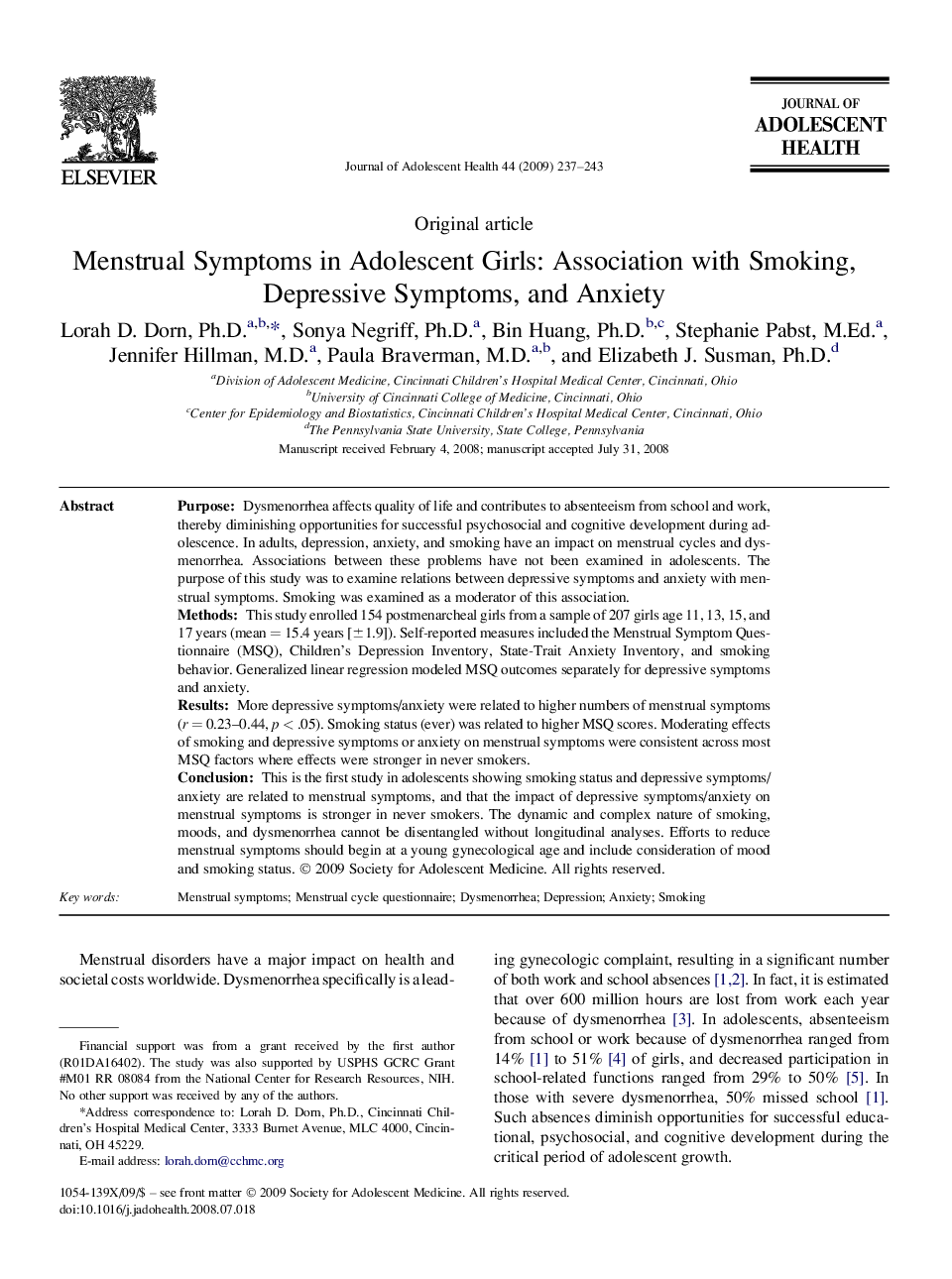| Article ID | Journal | Published Year | Pages | File Type |
|---|---|---|---|---|
| 1081084 | Journal of Adolescent Health | 2009 | 7 Pages |
PurposeDysmenorrhea affects quality of life and contributes to absenteeism from school and work, thereby diminishing opportunities for successful psychosocial and cognitive development during adolescence. In adults, depression, anxiety, and smoking have an impact on menstrual cycles and dysmenorrhea. Associations between these problems have not been examined in adolescents. The purpose of this study was to examine relations between depressive symptoms and anxiety with menstrual symptoms. Smoking was examined as a moderator of this association.MethodsThis study enrolled 154 postmenarcheal girls from a sample of 207 girls age 11, 13, 15, and 17 years (mean = 15.4 years [±1.9]). Self-reported measures included the Menstrual Symptom Questionnaire (MSQ), Children's Depression Inventory, State-Trait Anxiety Inventory, and smoking behavior. Generalized linear regression modeled MSQ outcomes separately for depressive symptoms and anxiety.ResultsMore depressive symptoms/anxiety were related to higher numbers of menstrual symptoms (r = 0.23–0.44, p < .05). Smoking status (ever) was related to higher MSQ scores. Moderating effects of smoking and depressive symptoms or anxiety on menstrual symptoms were consistent across most MSQ factors where effects were stronger in never smokers.ConclusionThis is the first study in adolescents showing smoking status and depressive symptoms/anxiety are related to menstrual symptoms, and that the impact of depressive symptoms/anxiety on menstrual symptoms is stronger in never smokers. The dynamic and complex nature of smoking, moods, and dysmenorrhea cannot be disentangled without longitudinal analyses. Efforts to reduce menstrual symptoms should begin at a young gynecological age and include consideration of mood and smoking status.
